Since our arrival in Germany, Austin and I completely embraced walking. It may have begun somewhat out of necessity for us, as we did not have a car or know much about the area, but regardless, walking quickly became a core feature of our new lifestyle. Garmisch is a naturally beautiful place, that literally begs you to get out there to experience it. I wear my smart watch regularly which captured the below data from our first full month here. My average daily step count came to a whopping 15,336. August 21 set the record high with 26,675 steps (about 12 miles). And you might think this was some fluke, but no, these numbers were sustained over the following 6 months. When there was nice weather, it took real tenacity to say “no, I need a rest day” and limit the amount of time we were walking or hiking outside. Being active and “sportlich” is unsurprisingly a central part of German culture. These things are highly valued and woven into life here. We too embraced them. And we loved every second of it.
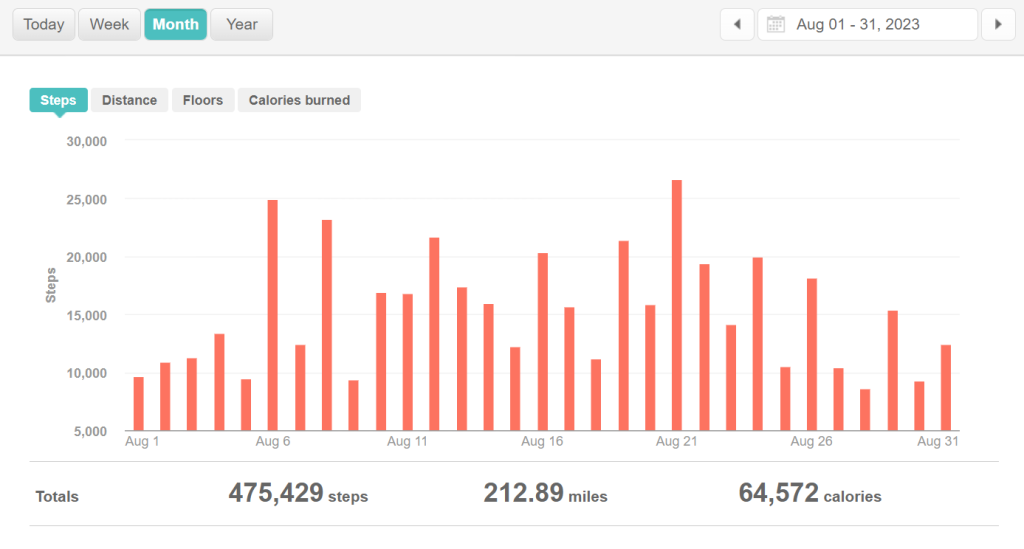
A major goal of moving to the Bavarian Alps was to achieve a more balanced and active life, not just in the summers, but all year long. When the winter hit, we didn’t slow down. Garmisch is a ski area and we can walk to one of the big resorts from our apartment, so that’s what we started to do. My experience with snow sports was previously limited to one day at Indiana’s renowned Perfect North 😛 so I signed up for a private lesson at the start of this season to get spun up on alpine basics.
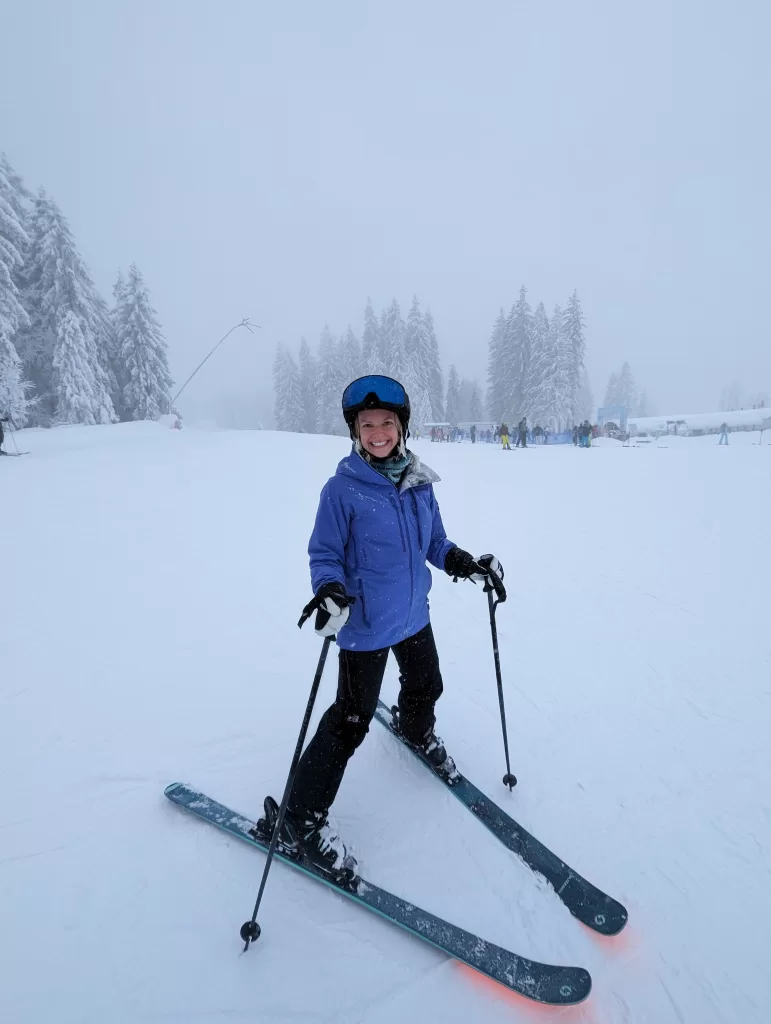
Many Germans grow up with skis on their feet. Sure, this initially made me feel like I was starting from behind learning at 30 years old next to ski schools with herds of 5-year-olds, but I was determined. My lesson taught me the fundamentals: snow plowing and french fries (pizza und pommes auf deutsch), the mechanics of turning, and staying in an engaged, athletic stance. Tack on a few more practice days and by the end of January, I was feeling good. Austin was my mountain guide, being patient as I progressed off the bunny slopes to tackle blue runs fairly comfortably. Skiing lived up to the hype. It was a fun and challenging activity that could be enjoyed with others in a breathtakingly beautiful setting – this accompanied by a mid-day beer and hot German soup was good for the soul.
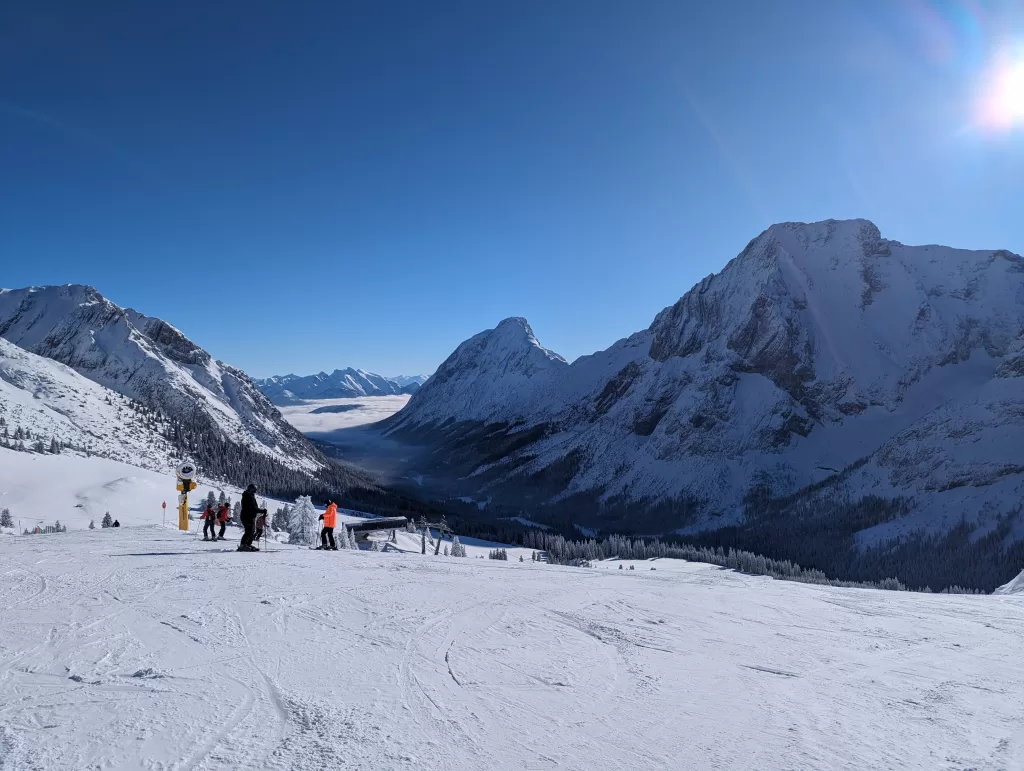
Now you probably have noticed that this is written in past tense… you’re about to see why. One Sunday, in late January, we decided to hit the slopes. I was ready to get back out there after returning from a week home in the States. We drove with some friends to Ehrwald, which is a ski town right across the border in Austria. It was a crowded weekend, but very clear and beautiful conditions. We hadn’t had fresh snow in some time, so I was getting used to skiing on something other than powder. Unfortunately, the day came to an abrupt end when I took a spill on an unforgiving edge of the piste (groomed and prepared snow trail). My binding didn’t release and my skis got twisted, causing instant torsion to my left knee. As I attempted to get up, I knew something was wrong. My knee gave out with any weight on it and felt totally unstable. I became passenger princess on the back of the mountain rescue mobile.
A trip to the hospital, a subsequent MRI, and a few doctors’ appointments later, I was officially diagnosed with a torn ACL and a partially torn MCL. The MCL should heal on its own in 6-8 weeks. The ACL will require full surgical replacement, and a rehab that lasts 6-9 months.
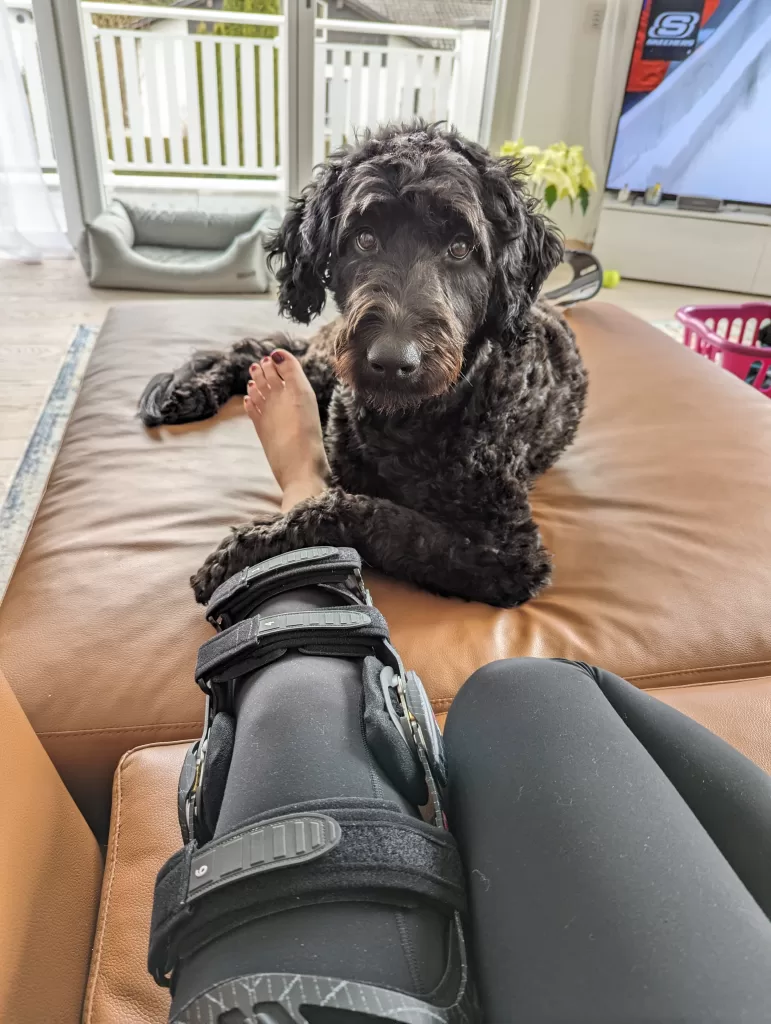
It’s crazy to think how quickly this injury can happen. A torn ACL is one of the most infamous sports injuries, but you never think it will happen to you. I’m not historically an injury prone person. I pride myself on being able to keep pace with diverse kinds of strenuous activities: running, yoga, tennis, rock climbing, etc. I guess I subconsciously felt like my overall high level of activity including cross training would make me strong enough to avoid tearing a major ligament. In the case of this injury, I was skiing within my level, on a run that I had successfully completed before. But it still happened.
Knowing that I can recover fully doesn’t lessen the blow at this point in time. It feels like such a setback against our active lifestyle here. We were hoping to go without a car for a full year, but that’s out of the question now. Maybe the universe is telling me to slow down a little. All in all, I’m keeping a positive mindset, recognizing how lucky I am to have Austin, supportive coworkers, and a comfortable place to recover. A whole new library of sights and travel destinations will be accessible to us with a car. So stay tuned for those adventures 😊
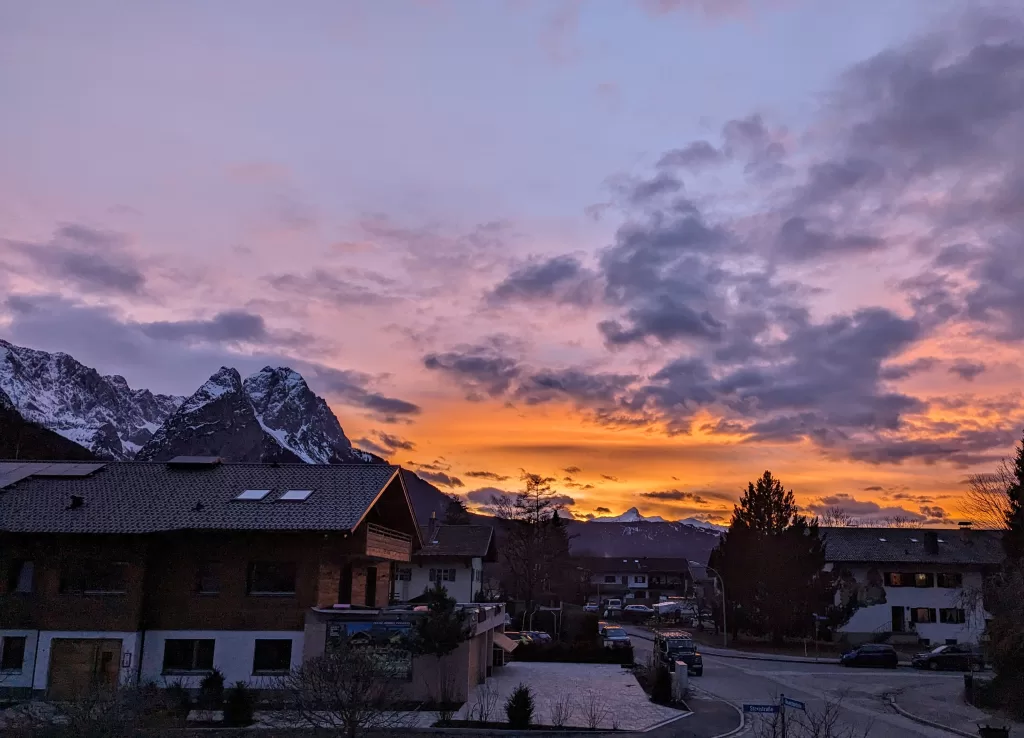
Another interesting thing that has resulted from this injury has been gaining a more complete understanding of the healthcare system here. Having recently left a nursing career in the States, I was eager to see how the two systems differ. While I wish I had tempered that eagerness so that I could observe under better circumstances, there are some distinctive aspects between German and American healthcare that deserve note. The German system can be difficult for a foreigner to navigate. There is an essential order of operations for appointments and referrals to be completed in. This, coupled with the language barrier, took some trial and error for us. I was surprised that many healthcare team members speak minimal English. I’ve had to independently google translate quite a few forms and notes thus far. This being said, the access to quality care has been great. I haven’t had to wait longer than 4 days for any type of appointment. This includes imaging, multiple specialist visits, and physical therapy. This leads me to feel that the German system is quite efficient. In the US, I have had to wait multiple months to get in with specialists for concerning specific health issues. Certain specialties like neurology, dermatology, and orthopedics in the US are notorious for low appointment availability with wait times over 60 days… or more.
To piggyback on efficiency and access to care, a visit to the Emergency Room in the US can take what seems like all day. I was in and out of the German Emergency Room within 2-3 hours. I only saw acutely ill or injured people in the waiting area. There was no head-to-toe nursing assessment completed, no lengthy medical history taken, and I didn’t sign my life away for discharge instructions. Focus was placed directly toward my chief complaint –no one even took a complete set of vital signs. Very different than in the US where vitals are taken at every opportunity. This may be attributed to the overall logical German approach (if I am not complaining of chest pain and conversing normally, why would you need a blood pressure?) or potentially due to the difference in practice levels for nurses here. Nurses are seen more as aides or technicians and have less responsibility than in the States.
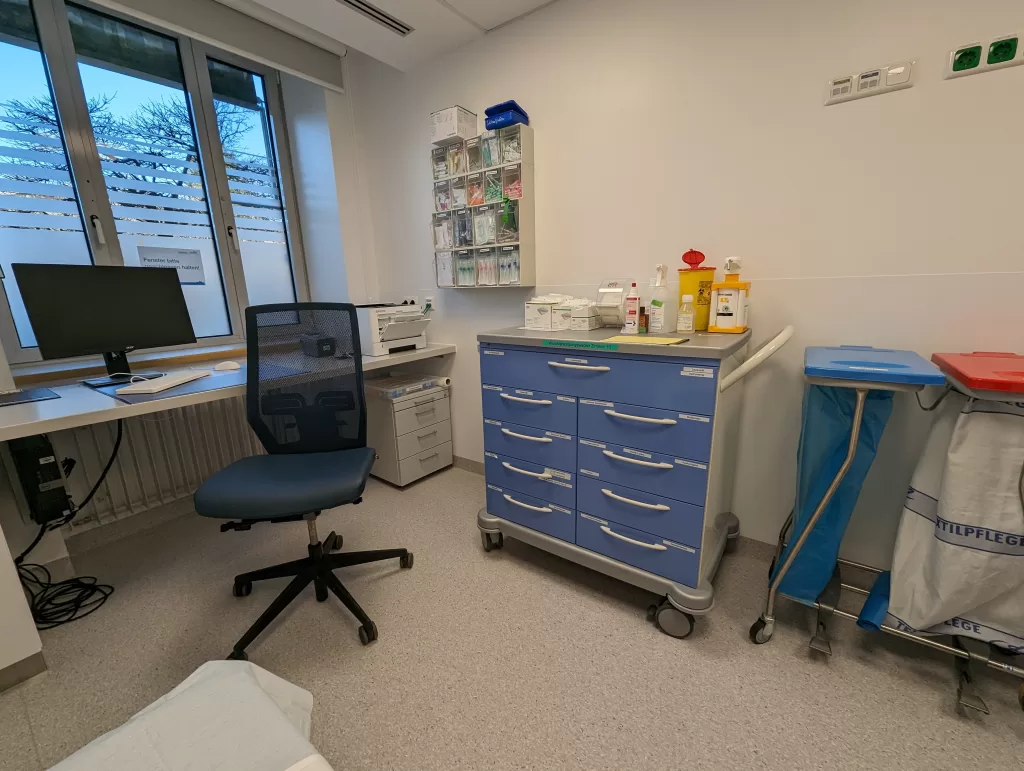
My last bullet point on this topic is the holistic approach I’ve noticed in the German medical system. Each of my doctors have discussed the importance of nutrition with me. I have received lymphatic drainage massages as part of routine care to ease swelling in my leg. Pre- and post-surgical physiotherapy are embraced as being the key to long term success in ACL recovery. These methods are also used in the US, but may only be minimally covered by insurance. And most patients are only going to do what is provided to them – whether for monetary reasons, lack of education/awareness, or otherwise. Furthermore, prescription medications are used sparingly in Germany. Specifically, pain medications have been essentially nonexistent thus far. I was not prescribed anything at the hospital and was later told to take ibuprofen only when needed, although tearing the MCL is recognized as being quite painful. Many US doctors are quick to medicate. Sure, there’s an argument that medication may allow for early mobility and rehab, but I’m just noting two ends of the spectrum at this point.
Our region in southern Germany sees many orthopedic injuries of similar nature due to the prevalence of mountain sports. I feel that I will have access to great medical care that is logical and tailored to my injury. The providers truly seem to value restoring mobility as much as the Germans value enjoying their mobility. It’s unfortunate that my 1st ski season ended in a torn ACL, but it is what it is. This injury has humbled me to recognize my own limits and respect the mountain’s variable conditions. I don’t feel that I took my mobility for granted prior to this injury, but I’ll surely be thankful for each and every step after this. I’m looking forward to sharing more insights on my path to recovery and racking up the steps again as soon as I can. Until then, I’ll be riding in the passenger seat of our car while channeling my inner Joe Burrow to accomplish a full recovery.
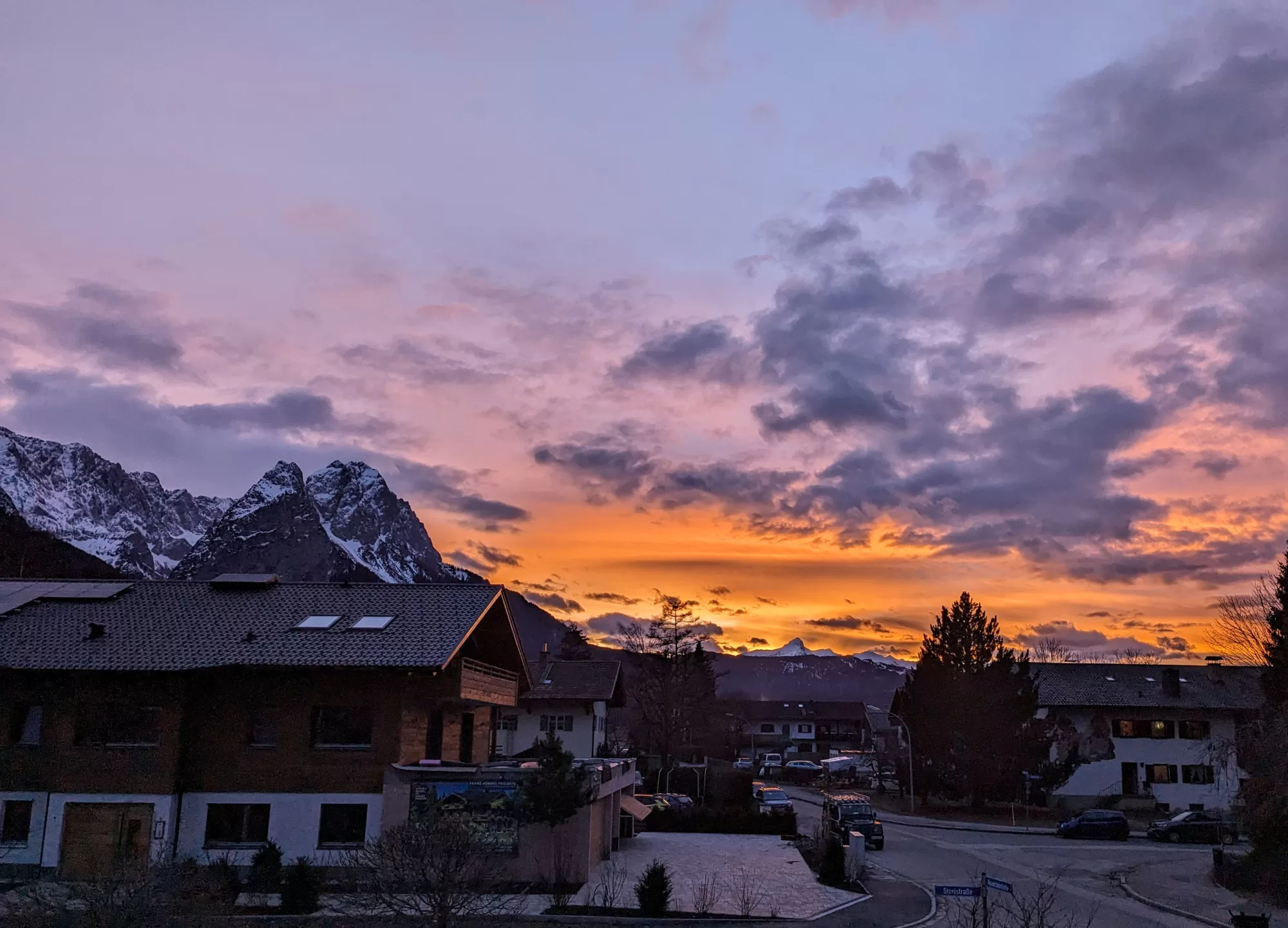
So sorry that you have to experience this mobility setback. But we are confident that you will be the “model” patient and follow all directives to get back and be even better than before. Praying for a successful surgery and a smooth rehab.
Such a beautiful outlook, Morgan! This will carry you through to a complete healing. When I had ankle reconstruction, I remember the cast clinic nurse telling me, when I had to get a new cast every two weeks, that I must have needed a rest from life?! What? She said, ‘Look around the cast room, everyone here needed to slow down.’ Hmmmm, I think she was right! God works in mysterious ways for our benefit. Or perhaps you just needed a new car!
Take good care, beautiful. Keep up the pet and music therapy!
PS. Hello to Austin…we are looking at your Loreto proposal this week. 🌴☀️⛳️
Hi Morgan and Austin,
My love and my prayers are with you for a speedy recovery.
Love to you both!
Grandma M…